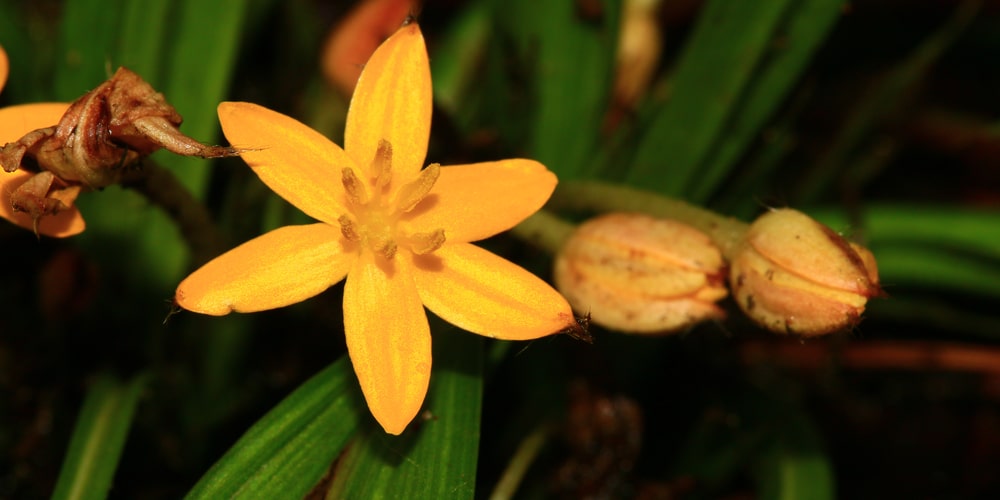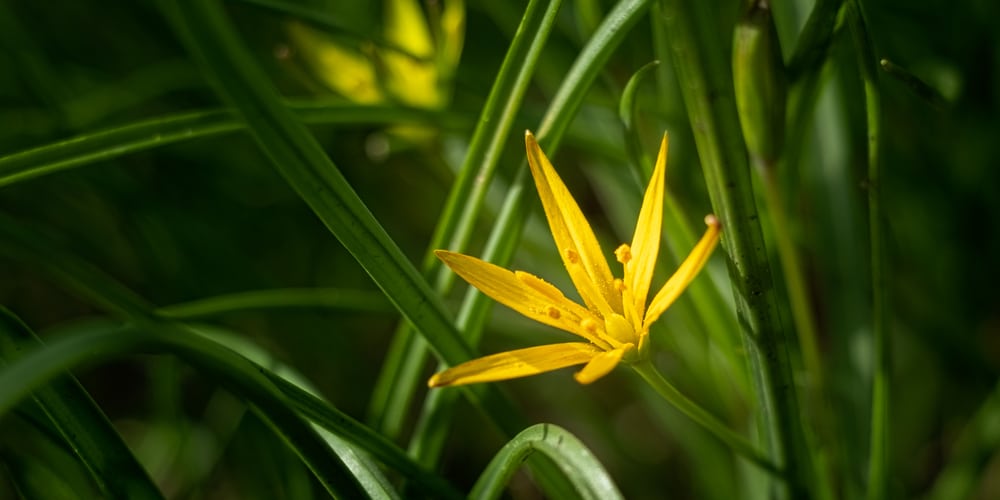Despite its name, star grass isn’t a type of grass. Instead, it is a plant part of the Lily family that produces elegant and attractive star-shaped bright yellow flowers among slender green leaves.
However, it is easy to mistake the plant for turf until blooms arrive. But what should you know about this plant?
And how can you grow it in your garden? Keep reading this essential guide to learning more about star grass!
What is Star Grass?
Star grass is a plant native to the United States that grows to about 12 inches tall. These wildflowers are hairy with light green leaves: they are ideal for borders and are excellent for growing in containers and rock gardens.
The plant blooms from March to June. Each stem might display one or two blooms. You can expect their flowers to last about a month, making this plant one of the longest blooming wildflowers.
The blooms might release a mild fragrance, but not always. After the flowering season, the plant displays seed pods with tiny black seeds. Once ready, the pods will burst and scatter the seeds around.
However, for reproduction to be successful, cross-pollination is necessary. Indeed, without it, seeds won’t be fertile.
Luckily, the plant has a mutually beneficial relationship with most pollinators, making this plant an ideal companion.
Some bee species and beetles feed on the pollen and contribute to the plant’s reproduction.
Also, its blooms attract butterflies and other beneficial insects. If you need a plant to make your garden more lively, this wildflower might be an excellent option.
Where does Star Grass Grow?
Star grass’s natural habitat includes forest edges, meadows, fields, and woodlands. You can find them around the United States. Because no other native flowers resemble the looks of star grass, you won’t have issues identifying it in the wild. Like other wildflowers, Star grass might spread into unmowed lawns.
These plants aren’t particularly aggressive, but they can form loose colonies under ideal conditions. When growing it in your garden, you should keep it under control to prevent it from becoming invasive. Consider deadheading the flowers and cutting their stems regularly.
But can you grow this plant in your garden? Jump to the following section to learn how!
How to Grow Star Grass
These wildflowers grow best under the full sun, even if they will tolerate partial shade. While taking care of them isn’t challenging, it is worth noting that most issues with this wildflower come from overwatering.
Once established, star grass doesn’t need much water. To avoid problems, ensure you plant it in well-draining substrates. Also, always feel the soil with your fingers before adding extra water.
If it isn’t dry, wait for a couple more days. These plants are resistant to drought, and most of the time, it is best not to water them rather than overdo them. Avoid watering these plants in the winter.
While star grass doesn’t need pruning, removing dead leaves in the fall will encourage new growth and keep your plant healthy. Keep in mind that these plants aren’t susceptible to pests or diseases under ideal growing conditions. However, young leaves and stems might be prey to slugs, snails, and leafhoppers.
The application of a balanced fertilizer might enhance growth. Don’t forget to follow the instructions you find on the product label and don’t use more than necessary. Too much of a good thing might be harmful!
You can propagate these plants by division in the spring. To keep your plant healthy, you should divide mature clusters every few years. Luckily doing so is not challenging. Only dig up the clump and separate healthy corms with good roots.
Related Article: Flowers That Start with S

